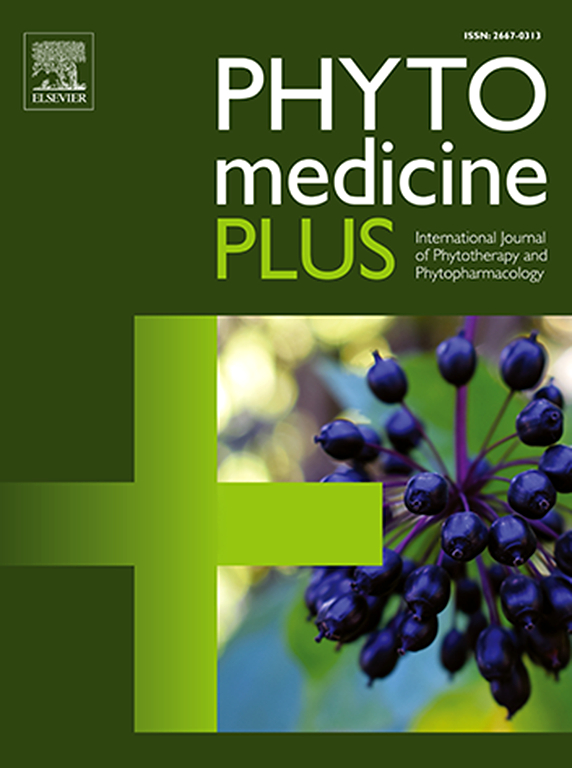大戟科巴豆属植物及其化学成分丰富,具有潜在的应用范围
Q3 Pharmacology, Toxicology and Pharmaceutics
引用次数: 0
摘要
本文综述了大戟科Croton属植物的各种应用。摘要综述了近十年来在世界范围内对巴豆的民族植物学、药理学和其他用途的研究和各自的讨论。需要考虑的一个重要方面是,目前对草药的审查为开发临床前研究支持的新治疗目标提供了另一种选择,并促进了针对当前影响我们的疾病的新治疗选择。方法在本综述的框架内,文献研究是基于发表在专业期刊上的文献,并通过访问全球公认的科学数据库(b谷歌Scholar、PubMed、Web of Science、Scopus、Science Direct、SciELO和SpringerLink)的关键信息进行的。从电子数据库中提取后,根据合格标准选择文章。对已发表的巴豆属植物文献268篇进行了民族植物学研究,其中172篇为最终分析。结果本属植物在世界范围内的研究增加可归因于其广泛的药用价值。民族植物学研究反映了不同社区的众多用途,解决了肠道疾病、全身疼痛、癌症、高血压、糖尿病、痔疮、性阳痿、呼吸系统疾病、COVID -19、溃疡和肠道寄生虫等问题。有关传统医学的信息引起了科学界的兴趣,他们试图确定导致其使用的化学成分。在这种情况下,巴豆的主要成分主要是萜类、类黄酮和酚类化合物,它们具有各种生物活性,如抗氧化剂、抗菌、抗凝血、抗微生物、细胞毒性、抗炎和抗癌活性。此外,Croton还可以用作杀虫剂和生物柴油的替代来源。这表明,该属的物种具有各种药物应用的潜力,并作为化合物的来源,可以成为植物治疗的活性成分,并取得显著的结果。很明显,这种类型的化合物在氧取代基方面具有多样性,这可能为未来的结构-活性关系研究提供感兴趣的信息,并提供天然来源的替代品,可以对相关生物体进行评估,以证明文献中发现的药理潜力。本修订版有一个新颖的主要目的:收集分布在世界不同地区(非洲、南美洲、亚洲、北美洲、中美洲和南美洲)的几种植物提取物的生物医学、化学和工业应用信息,对本文引用的研究的相关性及其对科学审查和系统复制所得结果的适用性进行客观评价。全球分布广泛,因为这些物种具有高度的适应性,并且对其所在的生态系统具有弹性。本文章由计算机程序翻译,如有差异,请以英文原文为准。

The Croton genera (Euphorbiaceae) and its richness in chemical constituents with potential range of applications
Introduction
This review focuses on the various applications of species from the genus Croton, which belongs to the family Euphorbiaceae. It aims to summarize information gathered worldwide from studies of Croton species concerning ethnobotanical, pharmacological, and other uses over the past ten years and the respective discussion. An important aspect to consider is that the present review of herbal medicines provides an alternative for developing new therapeutic objectives supported by preclinical studies and promotes new treatment options against the diseases that affect us in the current situation.
Methods
Within the framework of this review, bibliographical research was conducted based on literature published in specialized journals and by accessing crucial information from globally recognized scientific databases (Google Scholar, PubMed, Web of Science, Scopus, Science Direct, SciELO, and SpringerLink). After extraction from electronic databases, articles were selected based on eligibility criteria. In total, 268 published articles of plants of species of the genus Croton were reviewed for ethnobotanical uses, of which 172 were considered for final analysis.
Results
The increase in studies focusing on species of this genus worldwide can be attributed to their wide range of medicinal applications. Ethnobotanical studies reflect numerous uses in different communities, addressing issues such as intestinal disorders, general pain, cancer, hypertension, diabetes, hemorrhoids, sexual impotence, respiratory diseases, COVID -19, ulcers, and intestinal parasites. The information on traditional medicine has aroused the interest of the scientific community, which seeks to identify the chemical components responsible for its use . In this context, the main components of Croton are primarily terpenoids, flavonoids, and phenolic compounds, to which various types of biological activities are attributed, such as antioxidants, antibacterial, anticoagulant, antimicrobial, cytotoxic, anti-inflammatory, and anticancer activities. Furthermore, Croton has applications as an insecticide and as an alternative source of biodiesel. This demonstrates that species of this genus possess potential for various medicinal applications and serve as a source of chemical compounds that could become active principles of phytotherapeutics with significant results.
It is evident that this type of compound has variety concerning oxygen substituents, which may provide information of interest for future studies on structure-activity relationships and offer alternatives of natural origin that can be evaluated against related organisms to demonstrate the pharmacological potential found in the literature.
Conclusion
This revision has a novel and principal aim: to collect information on the biomedicinal, chemical, and industrial applications of extracts from several species distributed across various regions of the world (Africa, South America, Asia, North America, Central America, and South America), providing an objective evaluation of the relevance of the studies cited here and their suitability for scientific scrutiny and systematic reproduction of the results obtained . The global distribution is extensive, as these species have a high adaptability and are resilient to the ecosystems in which they are found.
求助全文
通过发布文献求助,成功后即可免费获取论文全文。
去求助
来源期刊

Phytomedicine Plus
Medicine-Complementary and Alternative Medicine
CiteScore
3.70
自引率
0.00%
发文量
178
审稿时长
81 days
期刊介绍:
 求助内容:
求助内容: 应助结果提醒方式:
应助结果提醒方式:


